Gujarat, India: The sugary path of milk - Khoa, condensing milk to sweet dehydration.
And comparison with Norwegian Brunost.
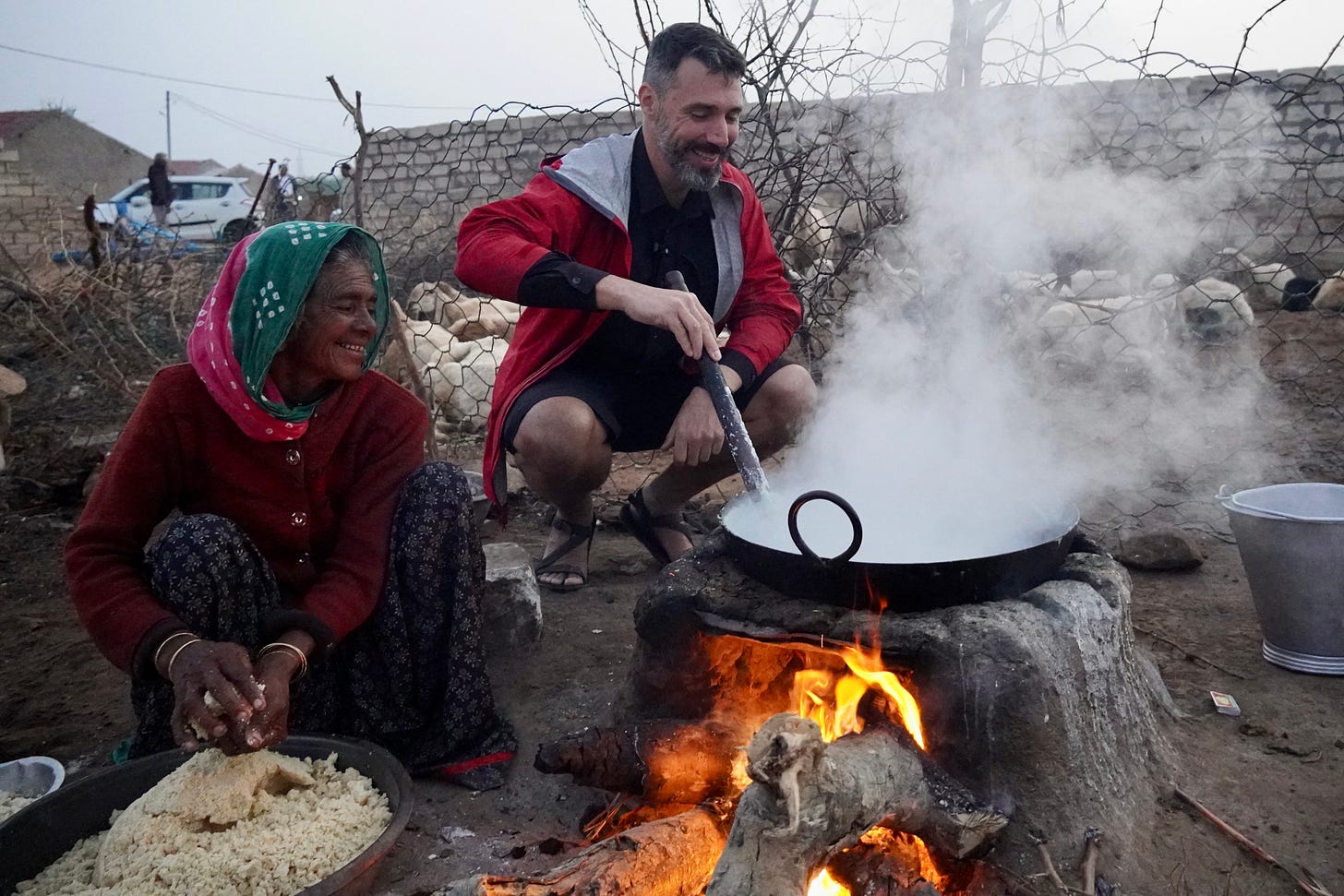
From India’s Northeast corner pocket of Sikkim, I flew to the far western state of Gujarat, bordering Pakistan. I’m here to learn about the diverse array of pastoral communities who have historically moved across and tended vast the grasslands of this semi-arid region. In this piece I’ll share my experience visiting members of a community called the Bharwad. I have just began learning about this group, so can’t speak about their structure or norms. What I will discuss is my visit to a village that specializes in the production of a concentrated milk food known as Khoa or Mawa. This will introduce a major role of milk in various Indian cuisines: it’s use as base for sweets. I will compare and contrast Khoa with what I observed last August in Norway: the making of Brunost.
Milk contains sugars - mainly Lactose - which is why unfermented milk is referred to as “Sweet Milk”. Cheesemaking generally involves a fermentation of those sugars into acids by bacteria, as the first step on a path towards concentration and/or preservation. It is this route that I generally walk, encouraging milk to sour, utilizing a culture of microbes indigenous to milk to enable fermentation of fresh milk, no refrigeration required or desired. There are other, lesser known routes that I have begun exploring. One of these branches out in the opposite direction. Rather than converting sugars into acid, it concentrates them, and removes the liquid portion of milk or whey. These paths often including Maillard reactions lending caramel like color and flavors.
We drove down a rutted route with humped Gyr cattle sauntering lazily in the murky light of a dusty, smog filtered dawn. An semi-enclosed space between 3 houses and some livestock enclosures served as a parking lot, playground, and kitchen space where multiple families had cook fires burning in earthen fire pits. What was cooking in these ancient pots, adding clouds of steam to the thick air? Milk. The mornings milk is reduced over burning wood to a fraction of its mass. It turns to a brown, lumpy sludge, like a shortcake batter with hunks of brown sugar left unmixed. A bright red food coloring is added, bumping the caramel tone into technicolor, a very Indian thing to do.
This hot, lumpy, sugar milk batter is tossed out in massive dollops onto sheets spread on a mobile bed frame. After it cools it is quite hard, and the woman we observed was grating this into sugary flakes, while stirring the milk and tending the fire. Multiple batches of these grated, sugary flakes are combined in a final firing over lower heat, with constant stirring. It looks like a far too dry pancake batter.
I took a turn stirring the milk, a task I’ve done a few times. As it boils and bubbles, a metal spatula mounted on wood is used to scrap the bottom, preventing scorching. This tool, and the stirring method instantly, transported me back to the beginning of my current travels 4 months ago in Norway.
It was in Norway that I learned about the Brunost (brown cheese) family, of which Norwegians are connoisseurs. Brunost is made by cooking down whey - often with added milk - until it gets very thick, intensely sweet, and undergoes heavy browning. This browning is due to Maillard reactions, rather than true caramelization. The sticky brown paste is molded into various shapes, sometimes elaborate statue like things, and eaten on bread with butter for breakfast, alongside a cup of black coffee. You can also check out an article I wrote about a Norwegian cheese called Pultost.
The approach of Khoa is similar, but starting from milk rather than whey makes a significant difference. This is whole fat cow and/or buffalo milk, and all the fat and protein are still there, most of which would be taken out through the rennet cheese process. So Khoa is likely not taken as far in terms of time and temperature. And yet is somehow gets drier, and is less sticky. I’m not sure why this is the case, perhaps you have some theories? Brunost has a very long shelf life, but Koa, with its high fat content, must be used relatively quickly, or I assume it goes rancid.
The texture of Khoa ends up somewhere between marzipan and a crumbly almond cookie. There are also various categories of Khoa, depending on its color and consistency. It is used as the base for a huge array of sweets, little pastries and cookies, sometimes soaked in syrups, or flavored with cardamom, ginger, and other spices. Shops selling an array of these Khoa-based sweets can be found all over Gujarat, a state known for its sweet tooth. It is the owners of these shops that buy most of the Khoa, and it sounds like the price paid for it is absurdly low.
The scene blew me away. Women in shawls and scarves, cooking milk over fires while children stared at me and mythically horned cattle and buffalo left in no hurry for a day spent out on the land, or in the village streets. The sun rising on a smoky desert morning amidst trash and squalor could be mistaken for Slab City, or the outskirts of Fresno, with less meth and more smiles and livestock.
I hope these images don’t come across as poverty porn. This is a very bleak economic situation, and there’s really nothing cool about that. India is a land of extremes, that can be shocking at times. Yet I feel comfortable here, people seem very approachable, and are quick to make friends. I can’t pretend to understand the intricacies and endless layers of history and social complexity that exist here. I can only sense and act, while participating in the spinning wheel of samsara. I will continue to walk, while sharing my sentiments and observations, using this voice I’ve found. This is me sending out a dispatch from the frontlines. A postcard from the Milky Way.




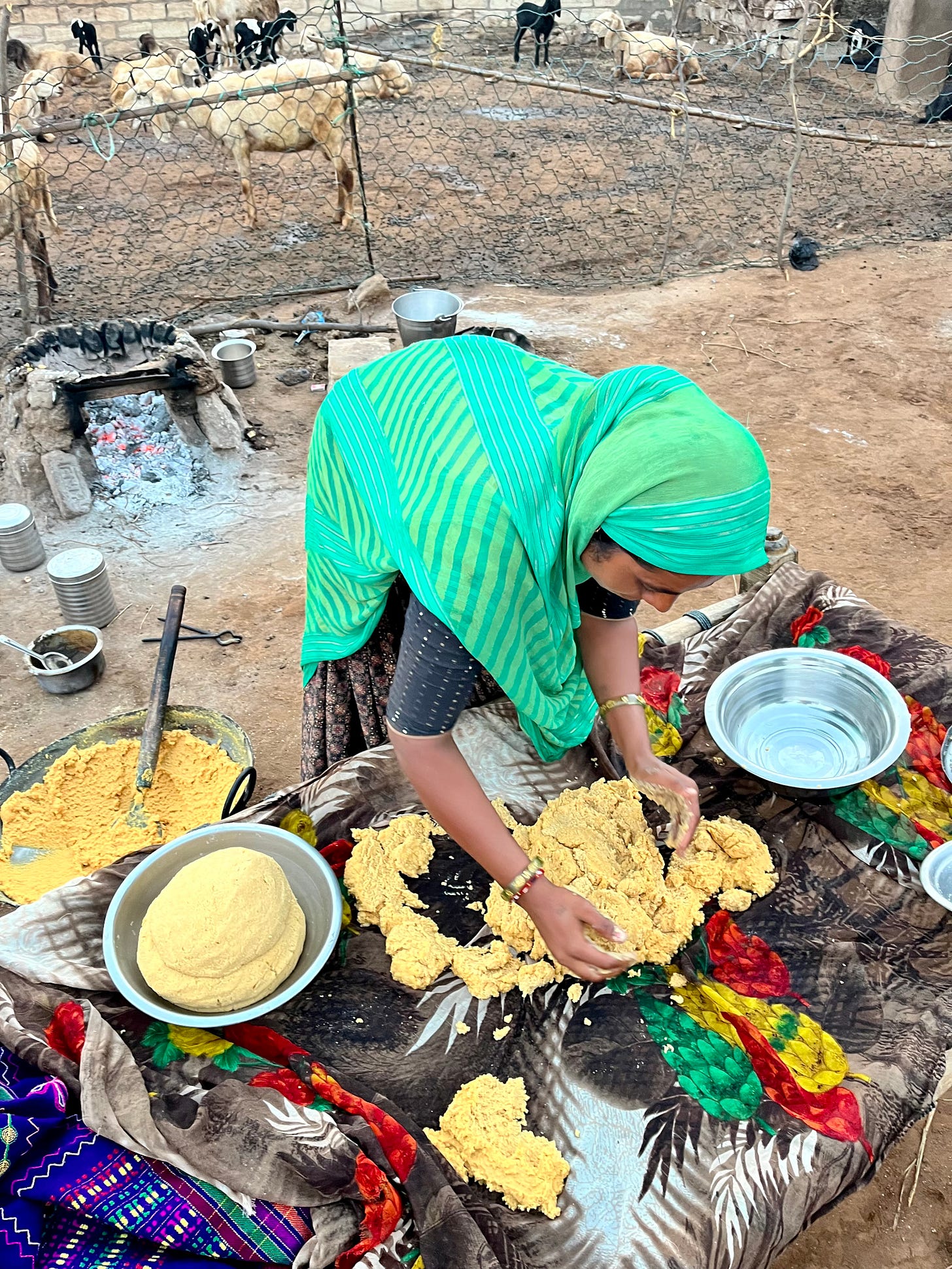

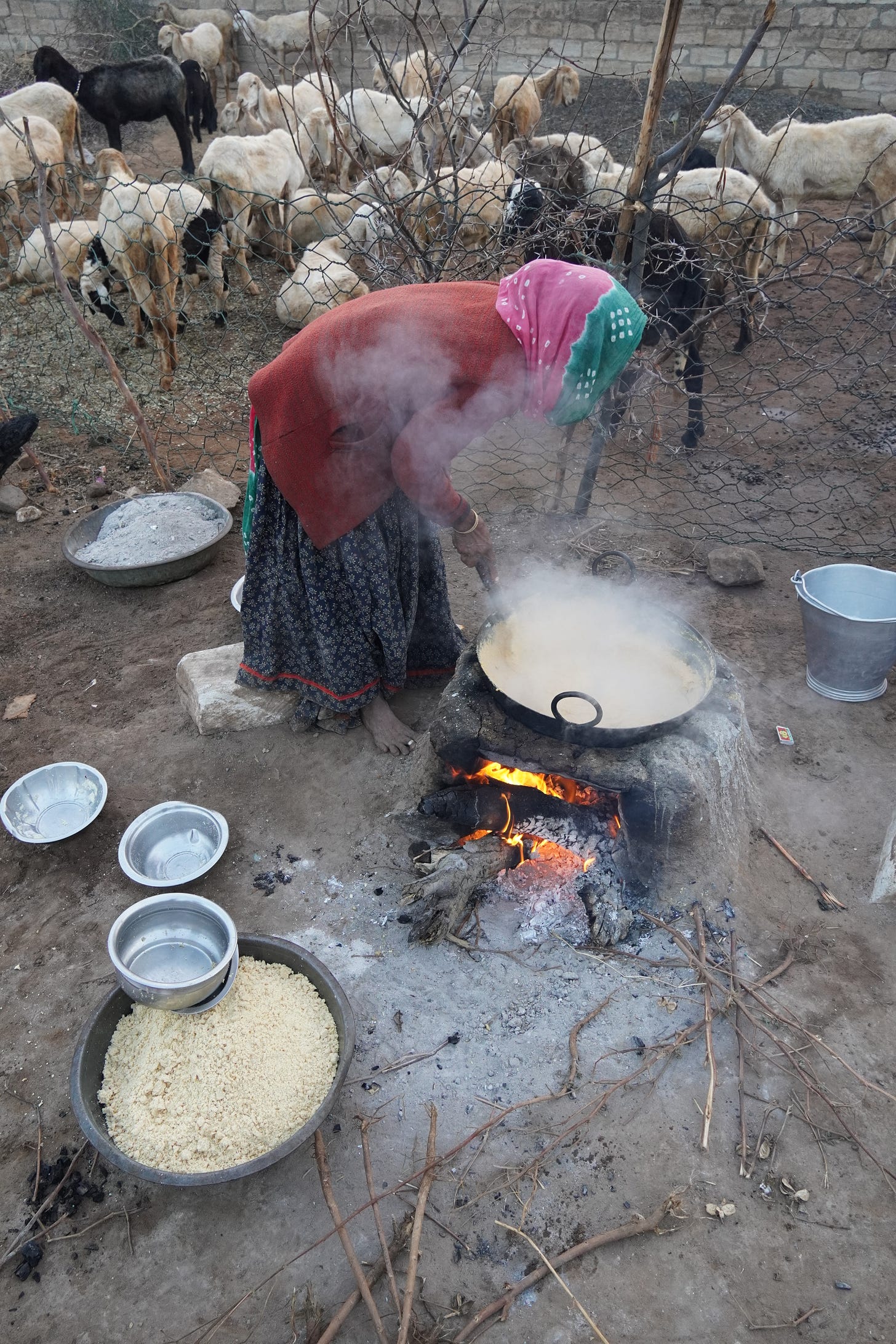
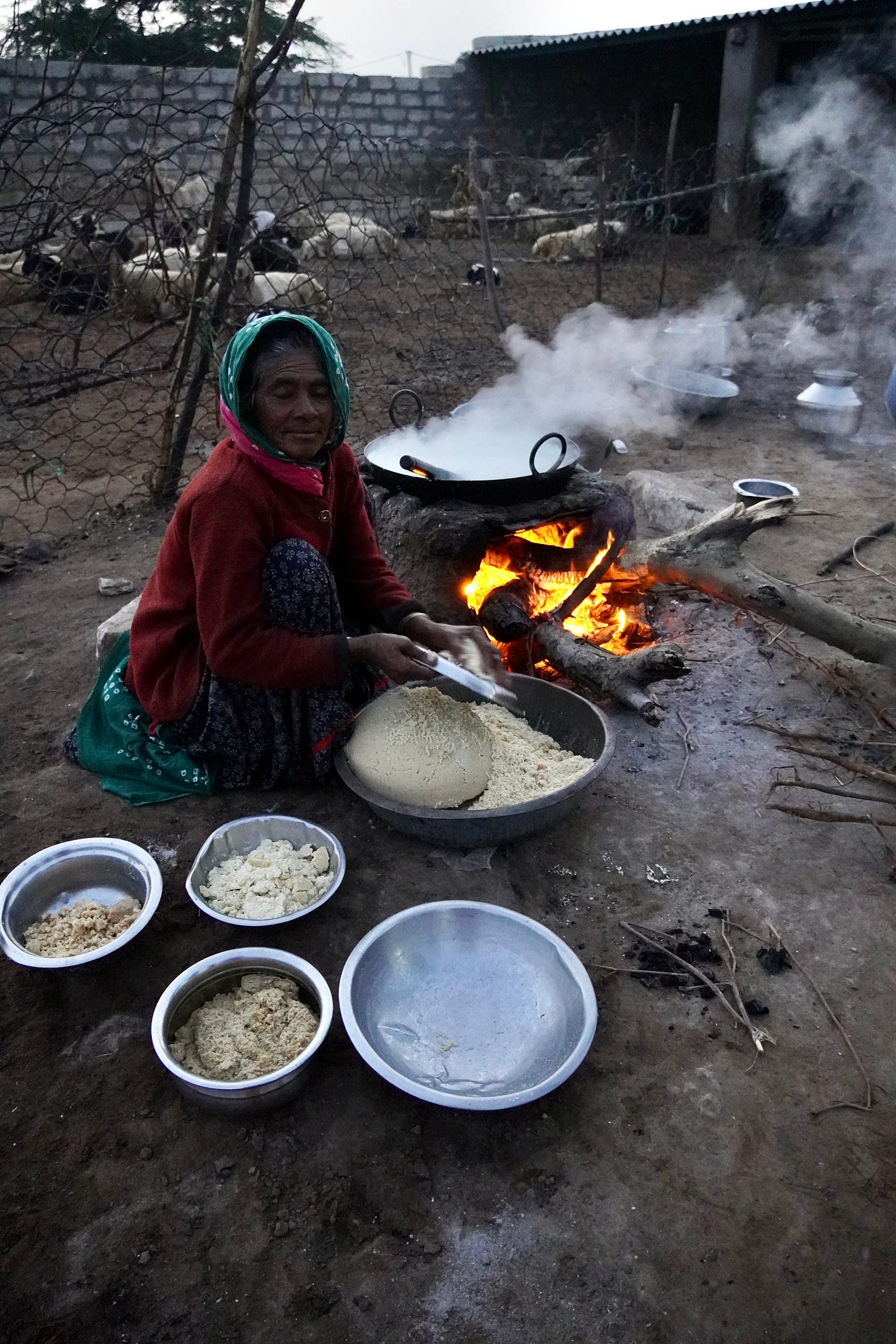


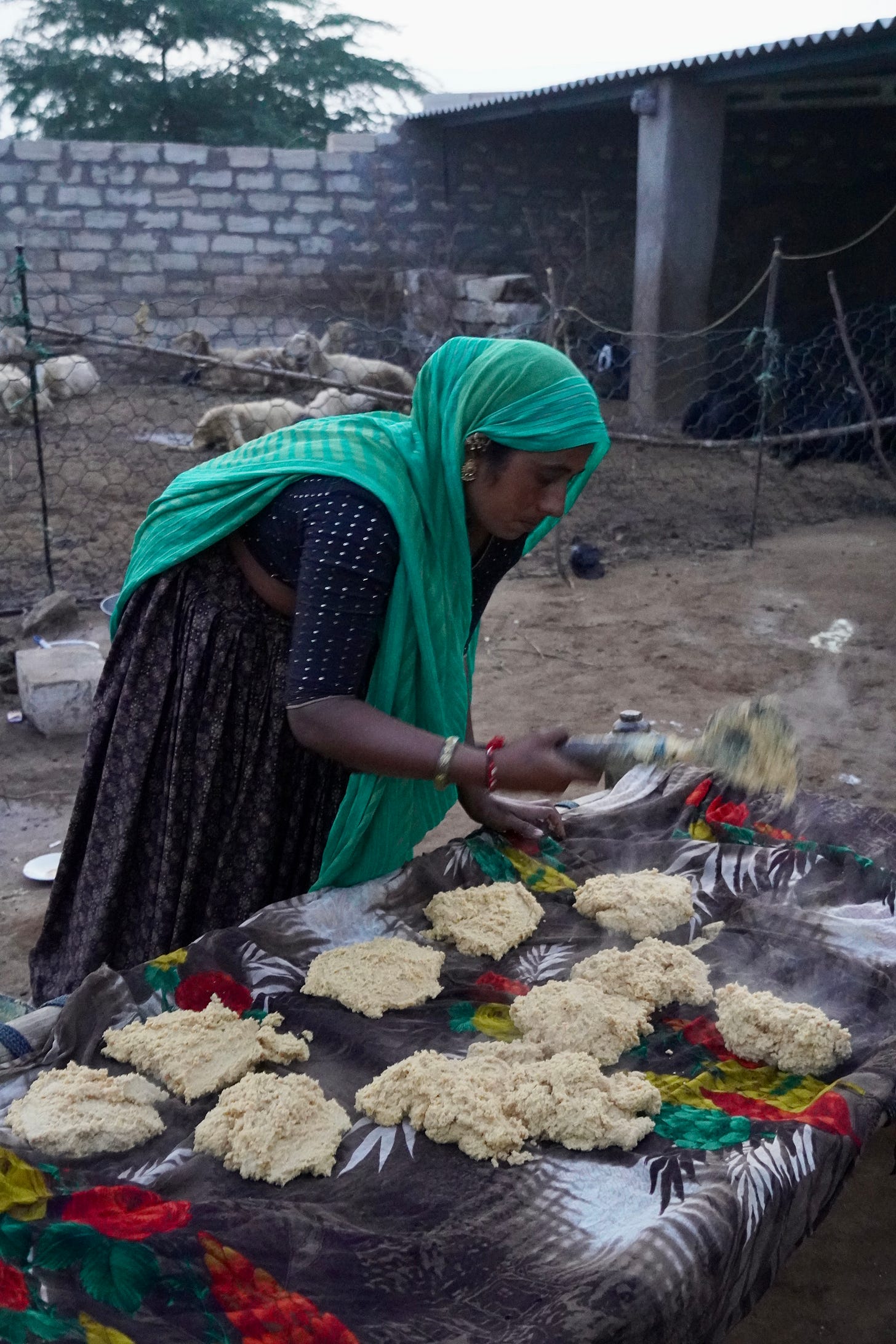


Thanks for sharing Trevor. Keep going!
Lovely research into their processes...when I first saw the title, I thought it was a reference to the Parsi story ("like sugar in the milk")!